– By Petar Meseldzija
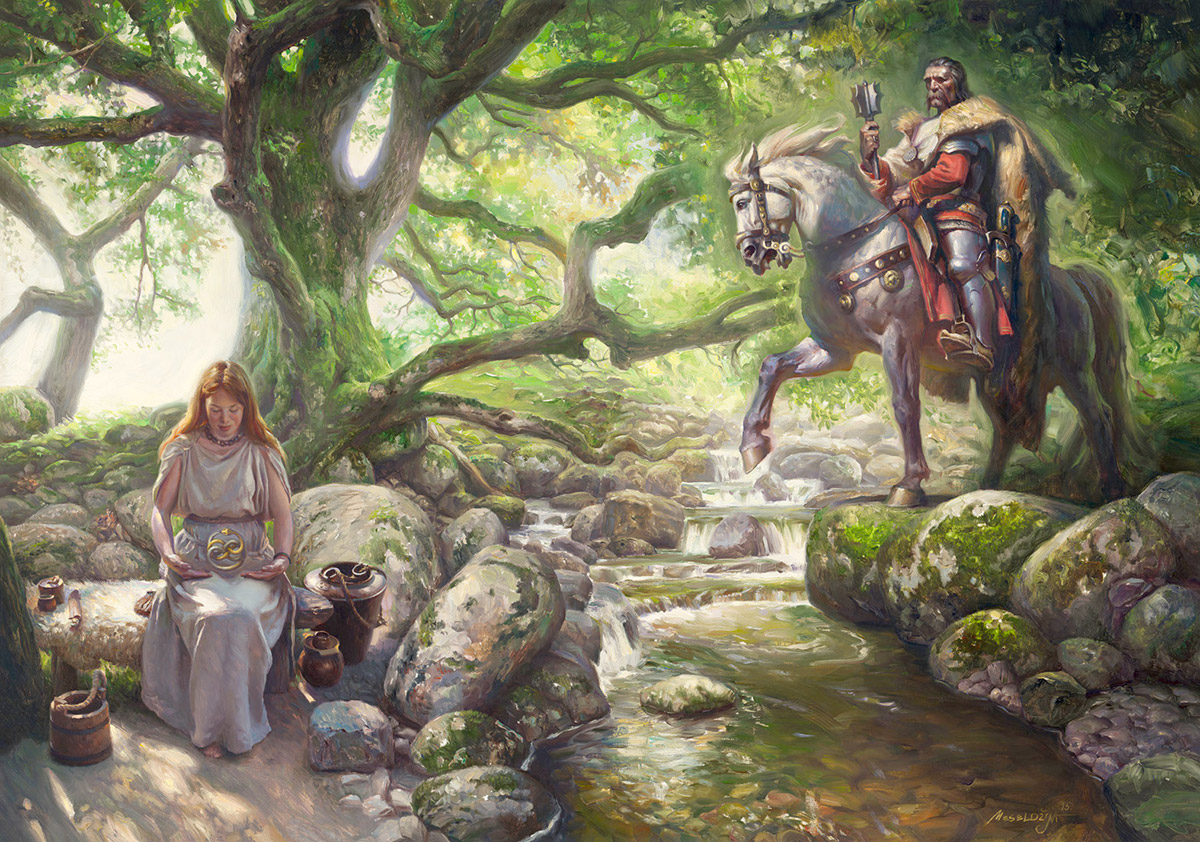 |
| Prince Marko and the Fairy |
In part 1 of The Quest for Personal Myth, I told you about my own, specific story. In part 2, I will let somebody else who is infinitely smarter and more competent than myself to talk about this subject matter, to tell us about OUR story and why this Quest is so important. Here is an extract from Joseph Campbell’s book Pathways to Bliss to inform and inspire you. Here we go:
“(…)Mythological images are the images by which the consciousness is put in touch with the unconscious. That’s what they are(…) When these symbols disappear, we have lost the vehicle for communication between our waking consciousness and our deeper spiritual life. We have to reactivate the symbol, to bring it back to life, and to find what it means, to relate it to ourselves in some way or another.
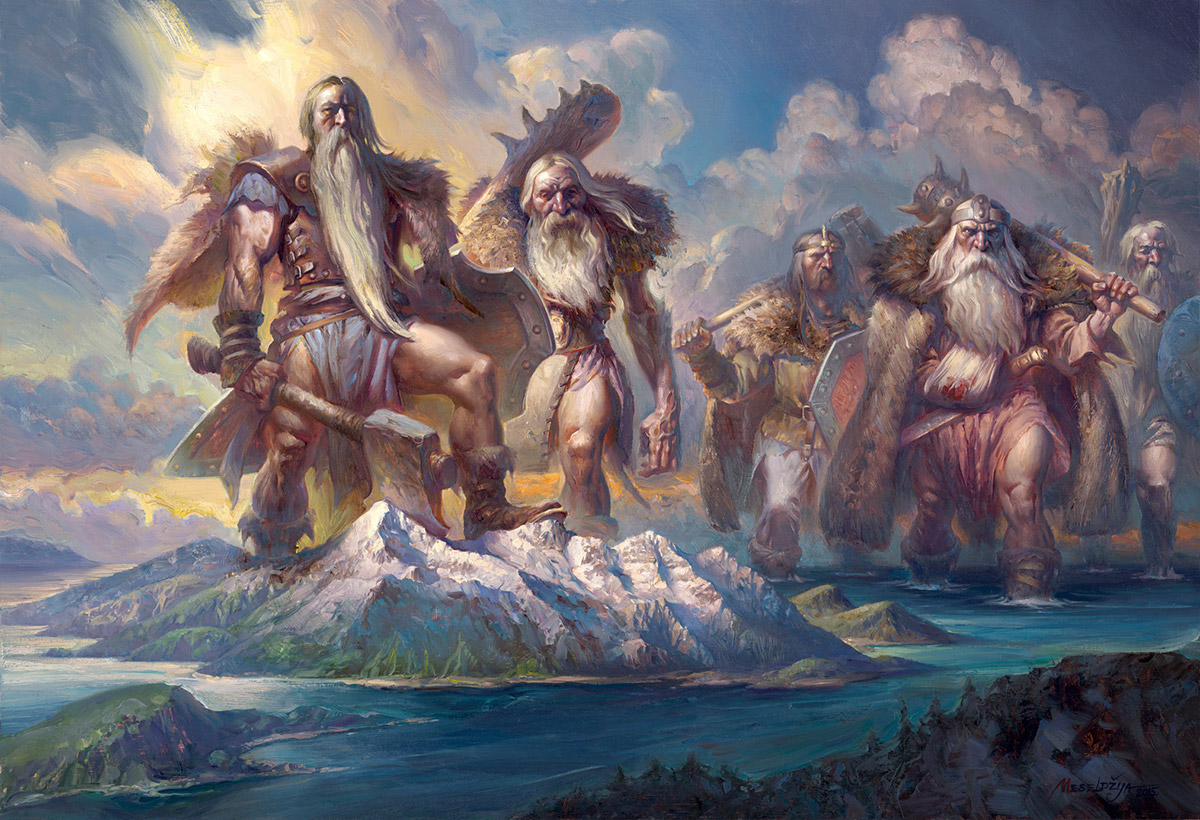 |
| The Exodus of Giants |
Now, what did Jung (Carl Gustav Jung) when he decided to seek out his Myth? His process of discovery is interesting in that it was so childish. Here he was, thirty-seven years old or so, and he asked himself, What was it I most enjoyed doing as a little boy when I was alone and allowed to play? As it turned out, what he liked to do was to put rocks together and make little cities out of stone.
So, he said, Why, I am a big man now, so I’ll play with big stones. He bought himself a piece of property in a beautiful place on the lake opposite the city of Zürich. He began planning and building a house in this lovely place, Ascona, and as he worked with his hands, he activated his imagination.
Now, that’s the big thing, to activate your imagination somehow. You can’t do this by taking suggestions from somebody else. You must find that which your own consciousness wants to meditate on. With his imagination activated, Jung found all kinds of new fantasies coming, dreams of all kinds. He began making records of what he had dreamed and then amplifying it by all kinds of associations.
 |
| Eowyn |
By doing this, he began the work of discovering his myth. He found that his dreams were becoming very important to him and very rich; he began writing about his dreams in a little journal. He put down each silly little impulse, each theme that came up in his dreams. He recorded the dreams as to bring them up into his consciousness, and as he kept the journal, the underlying images began coming through. Then he would make pictures of some of these dream things – always in a very solemn way. Now, this book is the kind of thing one would not wish to have published; it is just too private (Joseph Campbell refers here to The Red Book that was first published in 2009, 48 years after Jung’s death). It was his ceremonial, ritualistic exploration of the place from which the mystery of his life came.
If you keep a dream journal, you’ll find the dreams begin piling up on you. You want to go to sleep again and have some more. And you’ll find a story is building itself up there. Of course, you have to have a little free time to do this(…)
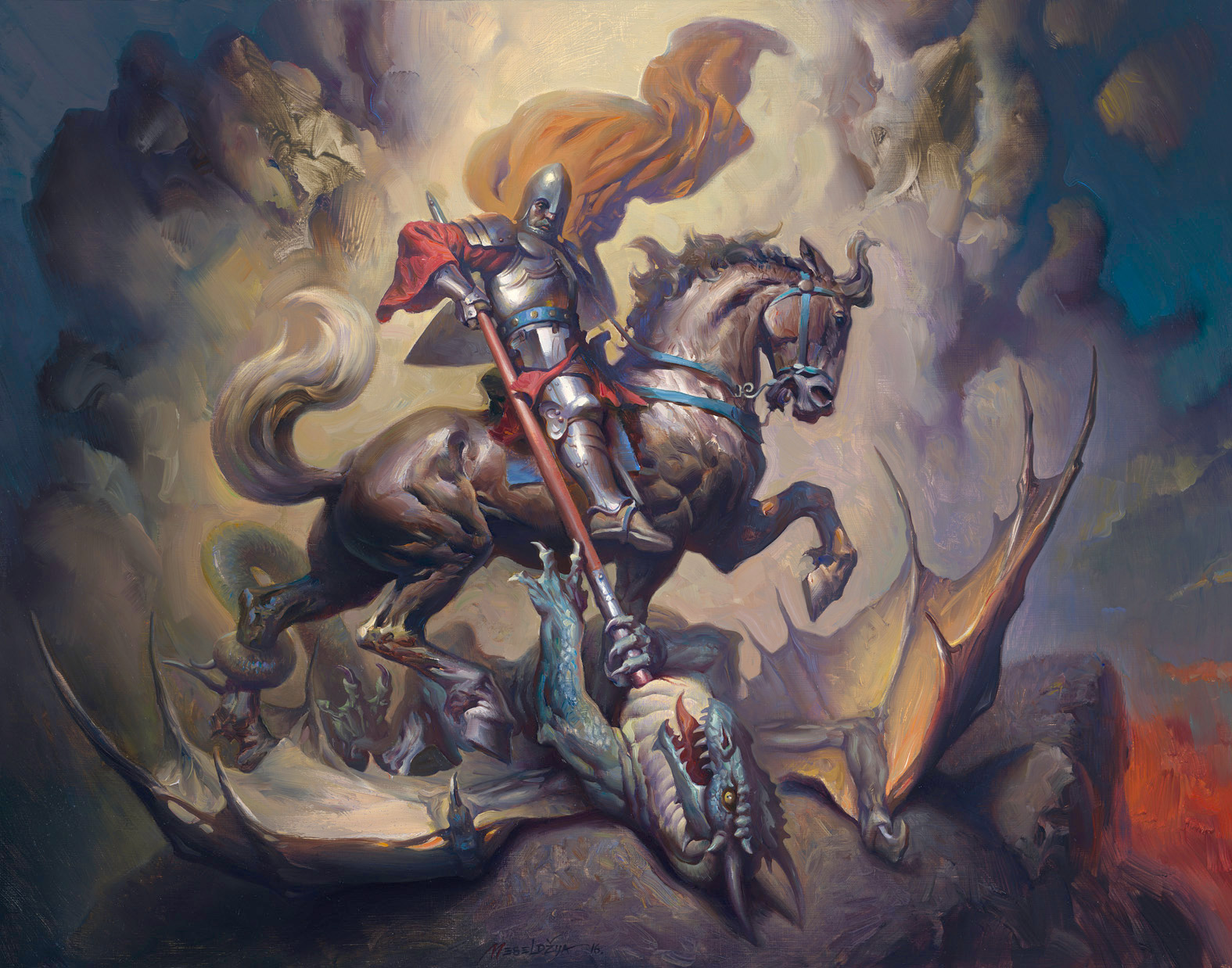 |
| St. Geogre |
Soon after he began keeping his dream journal, Jung realized that his dreams correspond to the great mythic themes that he had been studying in working on Symbols of Transformation. Mandalas began coming – Jung was the first to become interested in mandalas as a psychological vehicle of self-discovery(…) With the newly activated imagination, Jung came to the realization that dreams are of two orders: little dreams and big dreams.
Little dreams come from a level of dream consciousness that has to do with quite personal complications. They emerge from the level that has come to be known as the Freudian or unconscious. Little dreams are essentially autobiographical in their character, and there will be nothing in these particular dreams of yours that you would share with others – you are sorting through the expansion of consciousness as it bumps up against the taboos and “thou shalt nots” of your childhood and infancy.
Then comes another kind of dream, where you find yourself facing a problem that’s not specific to your peculiar life or social or age situation. Rather you have run up against one of the greatest problems of man. These are what Jung calls big dreams.
For instance, take the question that I broached a while ago: what is it that supports you in the face of total disaster? At such times, the psyche and the ego consciousness are forced to wrestle with the two huge mysteries of the nature of the cosmos and death. No other animal recognizes itself as being pulled between these two great mysteries. Also, deep within yourself lies the mystery of your own being to be dealt with. Your ego consciousness will be confronted with these overwhelming mysteries – the cosmos, death, and your own depth. When you face these sort of questions – instead of whether you should or should not go to bed with somebody – you are in a field of profound problems. As it happens, the great mythologies of the world also deal with these problems.
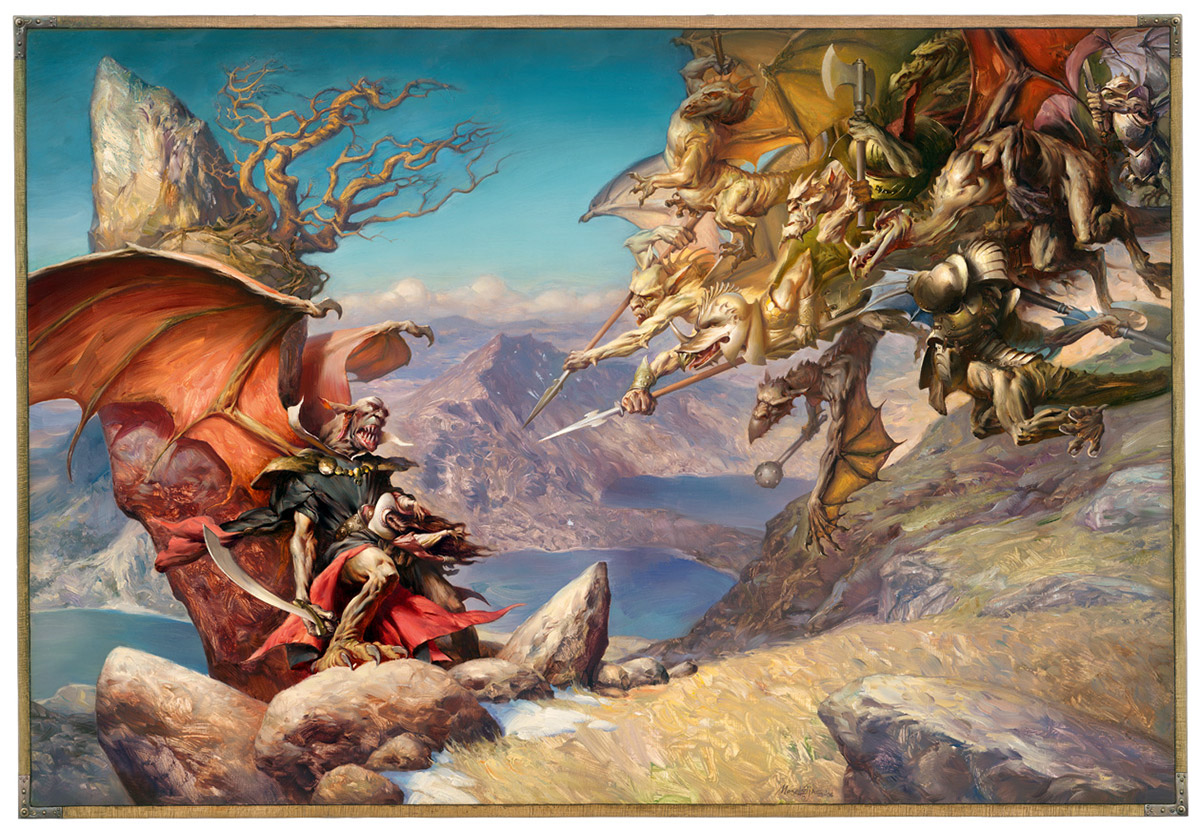 |
| Steel Bashaw10 |
Now, as I’ve said, these themes are universal. Of course, they occur with different historical inflections here, there, and elsewhere; just so, they’ll occur with different inflections in your life from those in anyone else’s. For every mythological symbol, there are two aspects to be distinguished: the universal and the local. Adolf Bastian coined the terms Elementargedanken (Elementary Ideas) and Völkergedanken (Ethnic ideas or Folk Ideas) to describe these two aspects.
I find that in India the same two aspects are recognized. There they are called mãrga and deśī, respectively. Mãrga comes from the root that has to do with an animal trail; it means “the path”. By this, Indians mean the path by which the particular aspect of a symbol leads you to personal illumination; it is the path of enlightenment. Deśī means “of the province”. All mythological symbols, therefore, work in two directions: in the direction of mãrga and in the direction of deśī. The deśī, or local, links the individual to the culture.
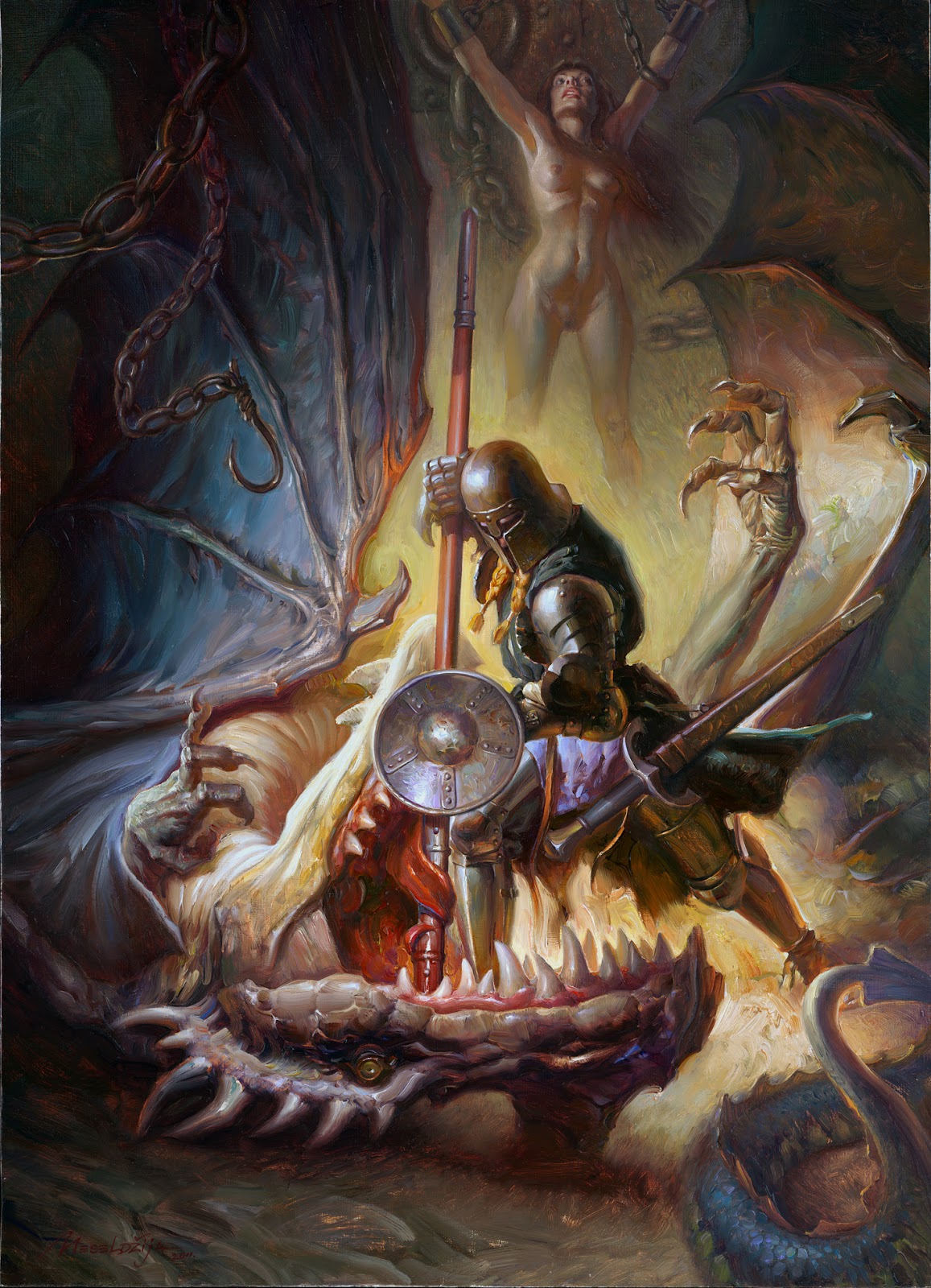 |
| The Rescuer |
A mythologically grounded culture presents you with symbols that immediately evoke your participation; they are all vital, living connections, and so they link you both to the underlying mystery and to the culture itself. Yet when that culture uses symbols that are no longer alive, that are no longer effective, it cuts you off. The mãrga or Elementargedanken provide a path back to the heart of the issue. Looking at the symbol in terms of its universal meaning rather than its local, specific reference takes you down the path to self-discovery and illumination.
The way to find your own myth is to determine those traditional symbols that speak to you and use them, you might say, as base for meditation. Let them work on you.
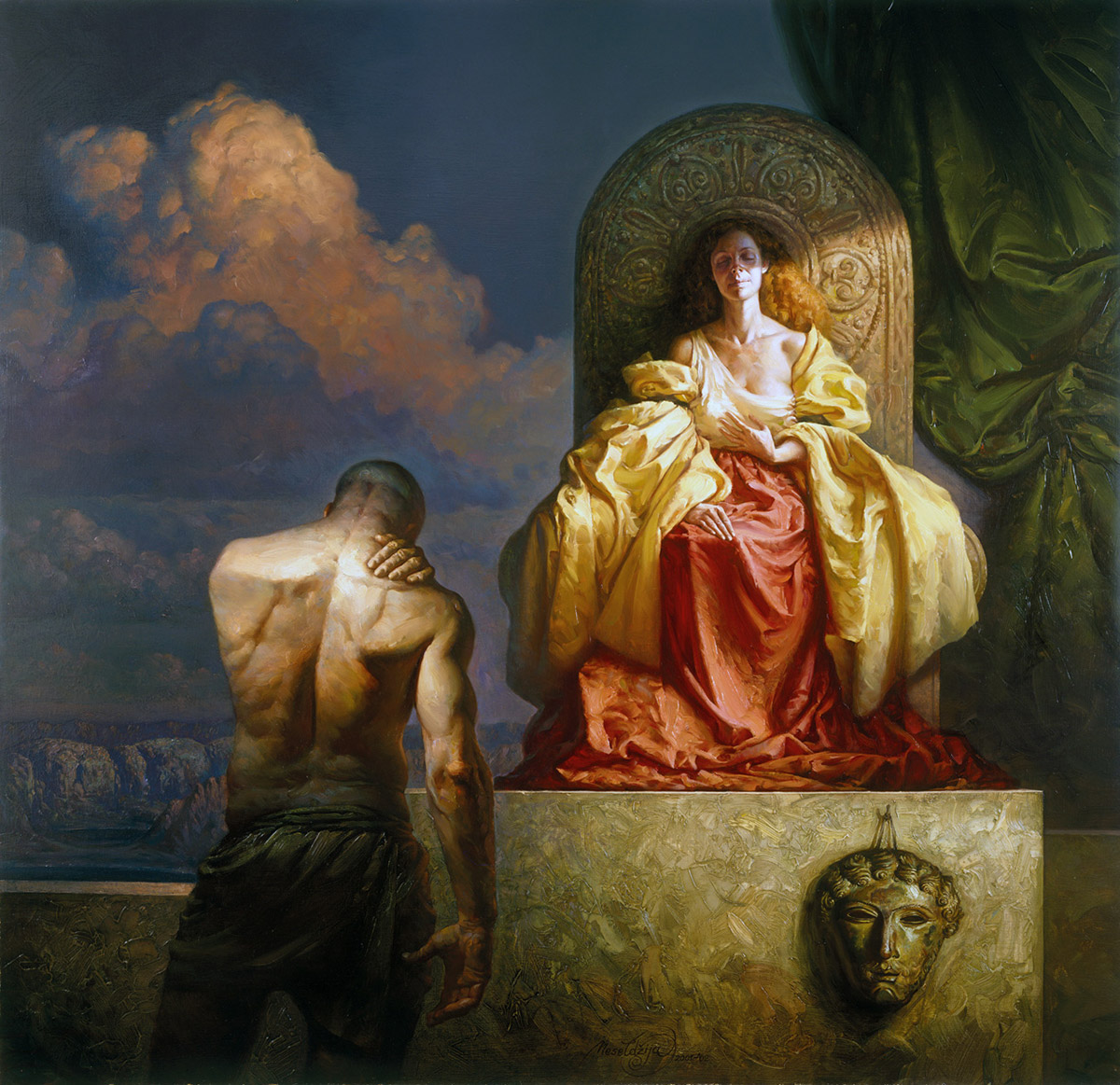 |
| Dawn of the Day |
A ritual is nothing but the dramatic, visual, active manifestation or representation of myth. By participating in the rite, you are engaged in the myth, and the myth works on you – provided, of course, that you are caught by the image.
But when you just go through the routine without real commitment, expecting it to work magically and get you into heaven, after all – you’ve turned away from the proper use of thee rites and images.
First, think about your own childhood, as Jung did – the symbols that were put in you then remain. Think not how they relate to an institution, which is probably defunct and likely difficult to respect. Rather, think how the symbols operate on you. Let them play on the imagination, activating it. By bringing your own imagination into play in relation to these symbols, you will be experiencing mãrga, the symbol’s power to open a path to the heart of mysteries(…)”
Good luck!















wonderful post , Petar, it is getting progressively more difficult to identify with themes and symbols , in which the foundations of them have been entirely discredited, in society, they have lost for many, their magic, as they have lost their meaning. Unfortunately without them nations, cultures , artists, are without an anchor or a compass, out in the post modern sea. I agree with you completely , we need to reconnect with ourselves, back when we felt like there was meaning to it all.
Well said, Marc; No symbols – no anchor, no compass! That’s exactly what these living symbols are. However, a society that has lost its myth, its symbols, is not yet doomed as long as it listens to its artists and poets, for as Joseph Campbell points out, it is the job of artists and poets to reactivate the symbols and bring them back to life. However, and quite honestly, I wonder how many of today’s artists are, firstly, aware of this ultimate responsibility (or want to go that far and recognized this as the ultimate responsibility of their vocation); secondly, how many of those who are aware, are willing to pay the price every true pathfinder must pay for taking “The Road Less Traveled”!? I guess, only time will tell…
some of us will, swim against the tide.
The power of dream is great indeed. I keep a diary myself and it's been 3 years this September. It's an amazing adventure and a great source of inspiration being in contact with something so deep inside of ourselves.
Myths drove humans since we began to exist, today emptiness must be filled with a new discover of old myths, as Mr. Fishman said we need a compass!
Very interesting post, and exactly the theme I have been grappling with for a while. I'm an artist with a serious sleep disorder that weakens the boundaries between sleep and waking. So, naturally I want this to be the main theme in my work. I've been keeping a dreamlog, and was almost ashamed when I found that – for a while – my dreams were in the shape of a computer game. (though I stopped gaming about 6 years ago). This says a lot about our culture today and the sybolism that is at our disposal.
i read you blog and found informative. plz try to elaborate it more with some more pics. from http://www.cloudyrathor.com
i read you blog and found informative. plz try to elaborate it more with some more pics. from http://www.cloudyrathor.com